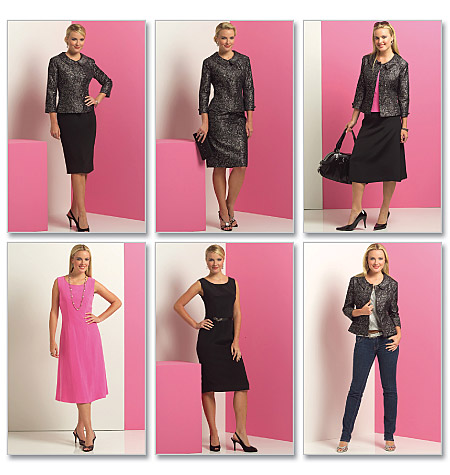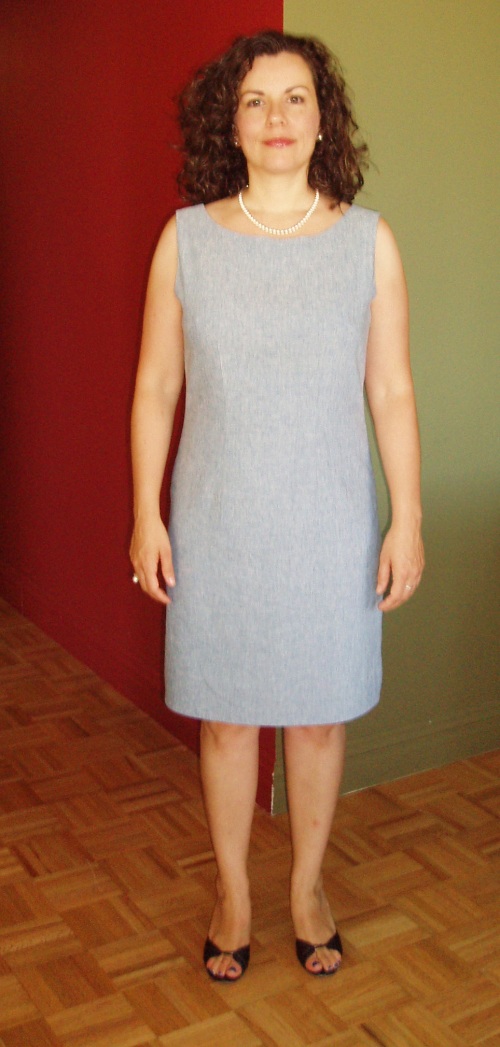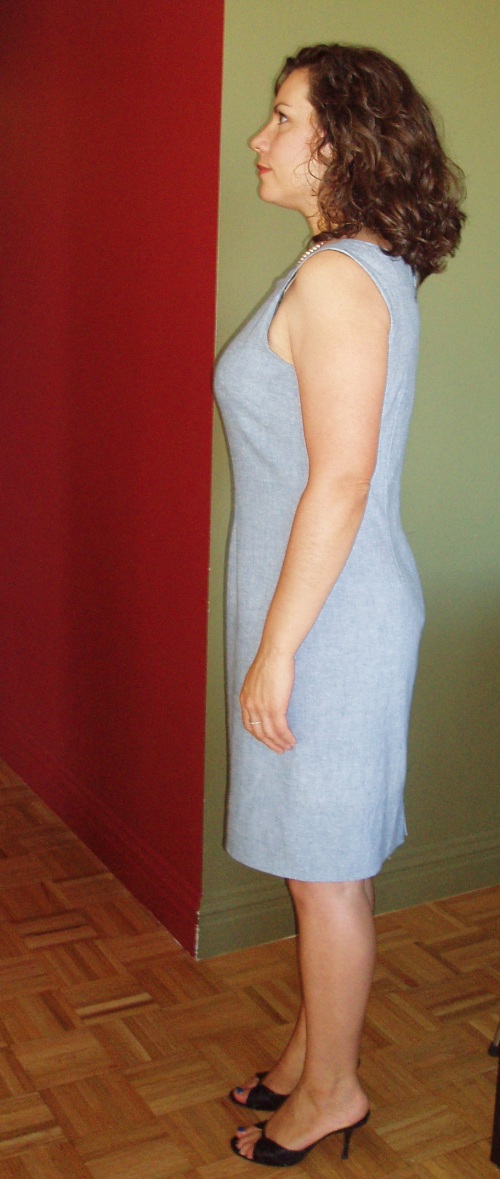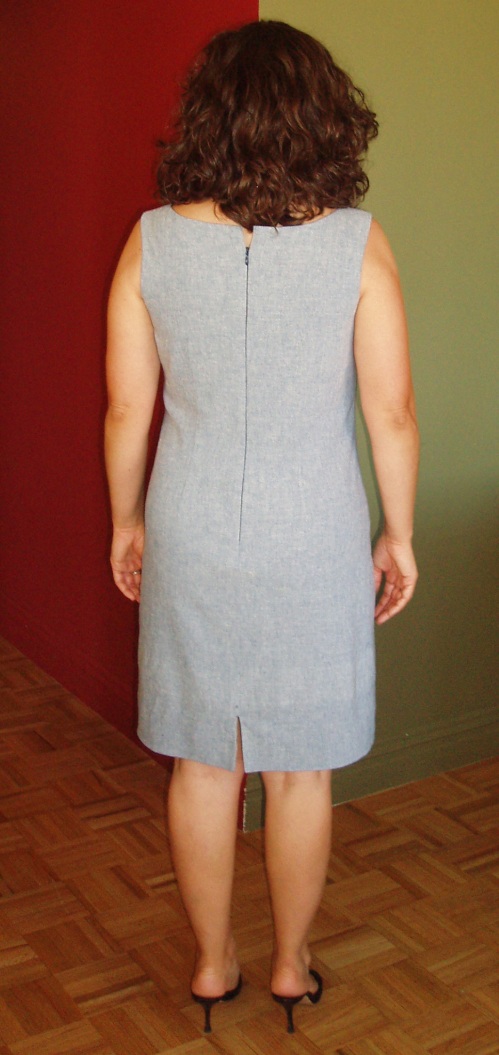Warning: Really long and picture heavy post.
As I mentioned in my last post, I am on vacation this week. I always take the week of Jack’s birthday off and my parents come and visit. We’ve had a great time so far. Me especially. I took advantage of every down minute I had to work with my wondrous new fabric from Elliott Berman (Lindsay T did an excellent review of this store). I visited their showroom last Friday with Lindsay T, Carolyn, and Allison.

at Mood fabrics

At Elliott Berman
I walked out with this beautiful, beautiful fabric by Christian LaCroix. It’s the most expensive fabric I’ve bought to date. Now I know a lot of sewists save their expensive fabrics for special projects, but I knew right away what I was going to make with this fabric, a pencil skirt. This fabric needed a simple pattern that would showcase its beauty and a pencil skirt with no waistband fit the bill perfectly. And wouldn’t you know, but I just so happen to have a pencil skirt pattern ready to go, Simplicity 2452.
If you will recall, I wanted to tweak the pattern a bit the next time I made it, so I went ahead and added my tweaks. I changed the side zip to a center back zip. I changed the vent to a slit. And then I….
Wait, are you sitting down?
Ok, I. DRAFTED. MY. OWN. FACING. Did you hear that? I drafted my own facing. No really, I did. Ordinarily, I would pester or hound email Thea or Karen for advice on how to do a facing. Or I would google it for hours on end. But not this time. I had a deadline — a family dinner at a French restaurant on Wednesday night. Come hell or high water I was going to wear my Christian LaCroix skirt to that dinner. So, I just did it. No ambivalence. No over thinking the problem or task at hand. I just drafted a facing. I laid out my skirt (at this point it was mostly constructed and I am slightly going out of order here in the telling of this tale, but that’s my prerogative, isn’t it?) and flattened it out as much as possible. I traced the top of the skirt onto pattern paper and cut it out. I meant to make a two inch facing, but forgot to include one of the seam allowances so it ended up being a 1.5 inch facing. Hey, cut me some slack! This was my first time drafting anything. Sheesh! I chose to add a facing to this pattern as I didn’t really like the twill tape method that I used (per the instructions) in my last skirt. Let me tell you folks… The facing is a superior method. My skirt feels so nice on and really sturdy. I interfaced it as well so it’s really substantial; that waist is not gonna stretch out. No way!

self drafted facings

finished facing
For the other beginners out there who have no idea how to draft or prepare lining patterns, I will explain how I went about creating the lining for this skirt. If I wasn’t adding a facing, I would just used the skirt pattern pieces and be done with it. But I since I did add a facing, I had to deduct area of the facing from the area of the lining. I thought about using the same method of laying out my skirt shell and copying it with tracing paper, but with the darts, it was already a 3D garment. So what I ended up doing was the following (I didn’t have time to research another way, so if there is a better method out there please let me know): I constructed the lining the same as the skirt, including the stay stitching and all the darts. Then I sewed another line of stay stitching 3 inches down from the top of my prepared lining. Once that was done, I cut a 1/2 inch above that. That way I included my seam allowance and it was exactly where the facing left off. When I sewed them together, they matched flawlessly. Ta-da!
I did ask Lindsay T for some advice in handling this fabric as I know she’s had a lot of experience with fancier fabrics and she had seen and felt the fabric in person. She suggested that I underline it with organza. I didn’t have any organza or time to shop for it. So I punted and used some ivory cotton batiste I had on hand. I cut it out exactly like the skirt pieces, no added width. I didn’t know at that point that I could have french seamed at the same time as underlining; I found that out after I google for underlining tutorials. Laura Lo has a great tutorial (and can I just take a minute to say how much I really miss her blog. I love her sense of style and the great tutorials she provided and, most of all, seeing all the beautiful clothes she made). Since my fabric was real ravelly, I knew I was going to serge the SA’s anyway. So I serged them together with the batiste. One note: I did construct the underlining separately from the fabric before basting. And I pressed the darts the opposite direction of the fashion fabric.

Another thing that I had to differently for this special fabric was I had to thread trace the darts as chalk or tracing paper would not work on this weave. This worked really well, but was time consuming.

darts are thread traced
Basically this skirt was easy to sew, but with the underlining, the facing and lining, I added a lot steps to the process. I think with all the hand sewing I did (basting the underlining, attaching the lining to the zipper, tacking down the lining to the slit, hand sewing the hem, etc) I have over 20 hours clocked in on this skirt. But I love it. This is my princess skirt. I feel so pretty wearing it. It feels substantial. It is the most professional garment I have made yet and I am really proud of it.
Now for some more pictures…

Front
The only cutting error I made was on the front, but it’s really minor and I think only other sewists will notice. I was so careful to cut on one of the lines of the pattern for the hem, but didn’t notice or line up the diamonds in the center of the skirt. I was more careful with the back.

back
On Monday, I dragged took Jack to P&S Fabrics in search of suitable matching lining for my skirt. He was a good sport about it. I bought a lot of lining actually as it was only $2.50/yd there. I only bought 1 yd of the lilac though as I thought I wouldn’t probably use it again. I found some lilac stretch lace in my lace stash; it was a perfect match. I’ve always admired Carolyn’s lace hems for her linings and wanted to try it out. I love it and will definitely do it again and again!

lining with lace hem
I used an invisible zipper and inserted it perfectly on the first try. I hope I’m not jinxing myself for future zippers. My only difficulty is getting the top to be even. Hmm… not sure what’s going on with that. The fabric lines up beautifully though and there’s no puckering at the base, so I am happy with it.

invisible zipper with hand stitched lining

invisible zipper, check out that fabric matching!
I forgot to mention that I used the “wrong” side of the fabric. While I adore the much more silvery “right” side, it was just a little too blingy for every day use. Since I want to be able to wear this to work, I used the side that had more black showing than silver. *Sigh*
Are you sick of the pictures yet?

hand sewn hem

Slit interior, lining is tacked onto the fashion fabric
And now for some pictures of the skirt on me, courtesy of my sister. Thanks Mer!



If you’re still here after this long post, thank you! I am so excited about this skirt. It has a lot of firsts in it for me:
- Drafting! Wow, still can’t believe I pulled this one off.
- Underlining
- Lace hem
- Working with very fancy fabric
Thank you’s are warranted for Lindsay T, Carolyn, Karen and of course, where would I be without my fantastic teacher, Thea. Thank you all for your patience and for sharing your expertise with me.
I did wear my skirt to dinner this past Wednesday and love it. I am going to wear it to Jack’s bday party too, inappropriate though it might be for a 3 yr old gymnastics party. 😉
Not sure what I’m working on next, still basking in the glow of this project. Happy sewing to you though!



















![checklist[1]](https://eword10.files.wordpress.com/2010/06/checklist1.jpg?w=500)































